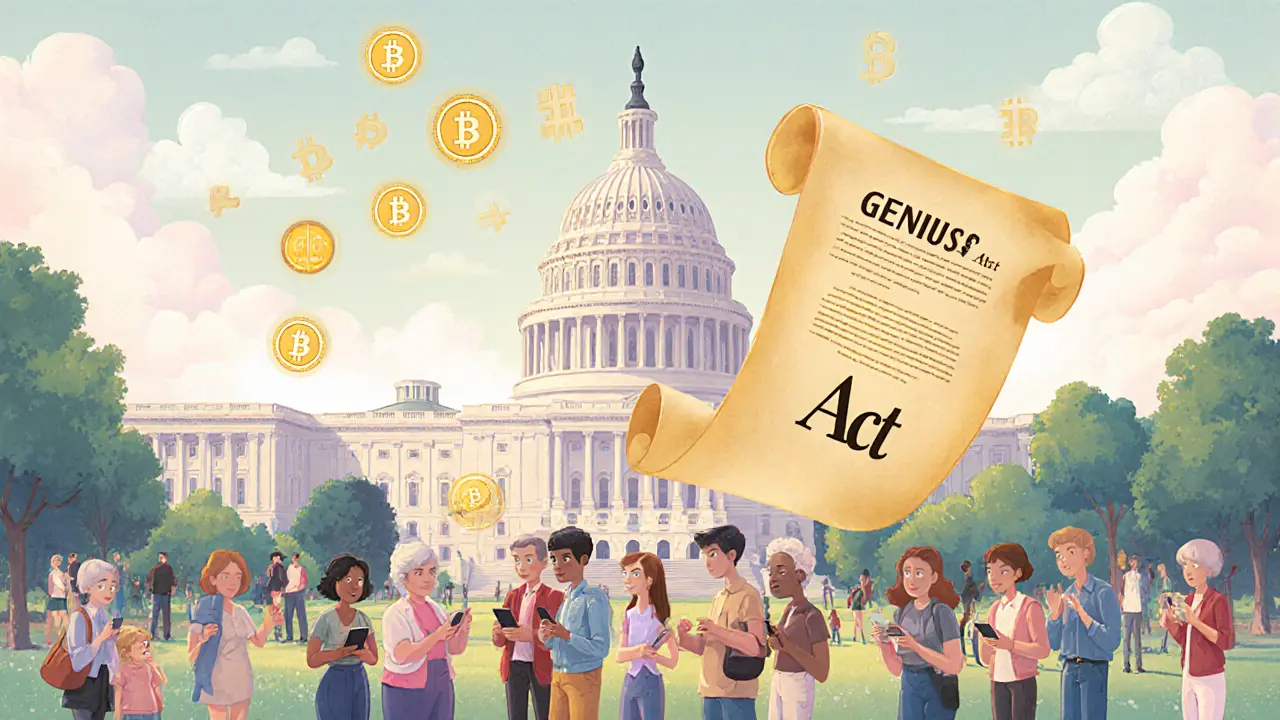Grassroots Crypto Adoption Calculator
Why This Matters:
In countries like Nigeria, where inflation is high and traditional banking is limited, crypto provides a faster and cheaper way to send money internationally. This allows families to keep more of their hard-earned income.
Key Insight In countries with economic instability and limited banking access, grassroots crypto adoption often thrives despite government bans.
Example Nigeria ranks among the top countries for crypto adoption due to high inflation and the need for cheaper remittance options.
Tip Using stablecoins like USDC helps avoid price volatility while still providing cost-effective cross-border transfers.
When citizens sidestep official bans, grassroots crypto adoption is the organic uptake of digital currencies by everyday people, driven by necessity rather than hype becomes a powerful force that reshapes finance from the bottom up.
Quick Summary
- Economic instability and limited banking push people toward crypto, even when governments outlaw it.
- Nigeria leads the world in grassroots crypto use despite strict bans.
- Peer‑to‑peer networks, social media tutorials, and cheap remittance options fuel rapid growth.
- Governments eventually shift from outright bans to regulated frameworks.
- Emerging markets with high inflation, capital controls, and unbanked populations are the next hotspots.
Why People Turn to Crypto When Governments Say No
The most compelling driver is survival. In countries where inflation a persistent rise in prices that erodes purchasing power spikes into double digits, local money loses its value fast. Nigeria, for example, saw inflation above 24% in 2023 and the naira collapse by more than 75% against the dollar since 2016. When wages can’t keep up, people look for a store of value that isn’t tied to a failing currency.
Banking gaps add another layer. Roughly 36% of Nigerian adults remain unbanked individuals without access to formal banking services, forcing them to rely on cash or informal money channels. Crypto wallets run on a smartphone, and 70% of the youth in Nigeria already own a data‑enabled device. This low barrier to entry makes digital assets the quickest way to move money.
Remittances illustrate the cost advantage. Traditional transfer services charge up to 8% per transaction, while sending Bitcoin or USDC can shave that fee down to under 1%. For families sending money from abroad, the savings are substantial and often mean the difference between feeding a household or not.
How Grassroots Adoption Grows Without Institutional Backing
Growth is driven by peer‑to‑peer (P2P) networks. Friends share QR codes, WhatsApp groups flood with “how‑to” videos, and local influencers host live demos. This community‑driven education bypasses official channels that might be censored or shut down.
Social media platforms act as informal schools. A single tutorial on buying stablecoins in a local language can reach tens of thousands within hours. These tutorials emphasize practical steps: downloading a wallet, purchasing USDC on a decentralized exchange, and sending it abroad. Because the information spreads organically, it’s hard for governments to block the entire knowledge chain.
Moreover, crypto serves multiple roles simultaneously: a hedge against devaluation, a low‑cost remittance tool, a gateway to global ecommerce, and a means of saving for future education. That multifunctionality entrenches it in daily life, making it more than a speculative asset.
Nigeria: The Playbook for Defying Bans
Despite multiple official crackdowns-from the Central Bank of Nigeria’s 2021 ban on crypto transactions to recent arrests of exchange founders-usage kept climbing. By 2024, Nigeria ranked second globally in crypto adoption, according to on‑chain data from Chainalysis.
Key tactics that kept the ecosystem alive include:
- Operating through peer‑to‑peer platforms that don’t require a centralized exchange license.
- Leveraging community “crypto hubs” in Lagos and Abuja where locals host in‑person workshops.
- Using stablecoins like USDC to avoid volatile price swings while still moving value.
- Integrating crypto payments into informal markets, from street food vendors to freelance platforms.
These grassroots mechanisms created a self‑sustaining loop: more users demanded better tools, developers built localized wallets, and the cycle continued despite bans.

When Resistance Turns to Regulation: Lessons from the United States
In the United States, the path was different but the outcome shares a pattern-initial resistance followed by formal regulation. The Trump administration the U.S. executive branch under President Donald Trump, in office during 2025 issued a presidential order in 2025 supporting responsible growth of digital assets. Shortly after, Congress passed the GENIUS Act a bipartisan bill that establishes a regulatory framework for stablecoins, requiring 1:1 backing with U.S. currency and short‑term liquid assets.
This shift mirrors what happened in Nigeria: once adoption reached a critical mass, governments realized bans were ineffective and costly. Instead of trying to eradicate the technology, they opted to create rules that protect consumers while allowing the market to flourish.
Comparing Adoption Drivers: Nigeria vs. United States
| Factor | Nigeria | United States |
|---|---|---|
| Economic pressure | High inflation, currency devaluation | Investment & wealth‑building motivation |
| Banking access | 36% unbanked, limited formal services | Near‑universal banking coverage |
| Remittance cost | Up to 8% fee via traditional channels | Lower fees, but demand for crypto as an alternative still present |
| Regulatory stance (initial) | Explicit bans on crypto transactions | Regulatory uncertainty, SEC lawsuits |
| Community education | WhatsApp groups, local meet‑ups | Online courses, media coverage |
What This Means for Emerging Markets
The Nigerian story isn’t an outlier. Countries hemorrhaging currency value-like Venezuela, Argentina, and Zimbabwe-show similar patterns: crypto becomes a lifeline when official channels falter. The common denominator is a mix of macro‑economic stress, capital controls, and a tech‑savvy young population.
Policymakers face a dilemma. Heavy‑handed bans can slow adoption temporarily, but they also push users into fully decentralized venues that are harder to monitor. A balanced approach-recognizing the demand and setting consumer‑protective rules-offers a more realistic path.
Practical Tips for Individuals Navigating a Ban
If you live in a country with crypto restrictions, here are some steps that have helped many people stay safe and effective:
- Use VPNs or Tor to access exchanges that might be blocked.
- Choose stablecoins (USDC, BUSD) for everyday transactions to avoid price volatility.
- Store private keys offline (paper wallet or hardware wallet) to protect against platform seizures.
- Join local crypto community groups for up‑to‑date security practices.
- Stay informed about any regulatory changes; compliance can save you from fines.
Future Outlook: From Bans to Benchmarks
The trend is clear: as the value proposition of crypto solidifies, governments will shift from prohibition to regulation. The surge of grassroots crypto adoption is a signal that any attempt to completely ban decentralized finance will meet resistance both technically and socially.
In the next five years, expect to see more “sandwich” policies-partial bans on certain activities (like high‑leverage trading) coupled with frameworks that legitimize stablecoins and cross‑border payments. For emerging markets, this could mean greater financial inclusion, but also a need for robust consumer‑education programs to mitigate fraud.

Frequently Asked Questions
Why does crypto thrive even when a government bans it?
Economic hardship, high inflation, and limited banking push people to look for alternatives. Crypto offers a cheap, fast, and borderless way to store and move value, so demand persists despite legal risk.
How do Nigerians access crypto without using banned exchanges?
Most use peer‑to‑peer platforms, decentralized exchanges, and community‑run wallets. They trade directly with friends or via local “crypto hubs” that operate off‑grid.
What is the GENIUS Act and why matters for crypto?
The GENIUS Act establishes a clear regulatory framework for stablecoins in the U.S., requiring 1:1 backing with U.S. dollars and short‑term liquid assets. It signals that even after years of uncertainty, legislators are ready to integrate crypto into the mainstream financial system.
Can I safely store crypto if my government monitors internet traffic?
Using a VPN or Tor to hide traffic, keeping private keys offline, and choosing wallets that don’t require KYC are the most effective safeguards. Still, no method is 100% risk‑free.
Will more countries follow Nigeria’s example?
Countries facing high inflation, capital controls, or large unbanked populations are already seeing similar grassroots movements. As the technology matures, regulators worldwide are likely to move from bans to supervised frameworks.


Marie Salcedo
January 6, 2025 AT 19:10Seeing grassroots crypto lift people out of tough spots is truly inspiring. It shows how technology can bypass broken systems and give everyday families a lifeline. The community spirit in places like Nigeria proves that hope can thrive even under heavy restrictions. Keep sharing these stories, they motivate many of us to learn more and maybe try it ourselves.
Latoya Jackman
January 12, 2025 AT 14:04The figures you cited match the recent Chainalysis reports on on‑chain activity. It is clear that economic pressure, not speculation, drives most of the adoption. Your summary captures the core dynamics without overstating any point.
Megan King
January 18, 2025 AT 08:57Yo, this is real talk – people are actually using crypto to send money home cuz banks are slow af. I’ve seen folks in Lagos swapping USDC on a group chat and getting the cash in minutes. It might sound risky but the community vibes keep it safe. Just remember to keep your private keys offline, fam.
Stay curious and keep helping each other out.
Rachel Kasdin
January 24, 2025 AT 03:50Americans should watch how Nigeria flips the script on bans – it’s a lesson in resilience.
We can’t afford to sit still while other nations innovate.
Keith Cotterill
January 29, 2025 AT 22:44One must, with a degree of intellectual humility, acknowledge that the phenomenon under discussion transcends the simplistic binaries often promulgated by mainstream discourse; it is not merely a story of rebellion against regulatory edicts, but rather an intricate tapestry woven from threads of economic necessity, technological diffusion, and sociocultural adaptation. The macroeconomic volatility that besieges nations such as Nigeria, Argentina, and Venezuela constitutes a catalyst, rendering traditional fiat mechanisms insufficient for the preservation of wealth. In this context, digital assets emerge not as speculative novelties but as quasi‑monetary instruments, calibrated to function within the bounded rationality of the unbanked populace. Moreover, the decentralized architecture of blockchain networks furnishes a resistive layer against state‑centred expropriation, thereby fostering a degree of financial autonomy previously unattainable. It is imperative to recognize that peer‑to‑peer ecosystems, catalyzed by ubiquitous smartphone penetration, democratize access to sophisticated financial primitives without the intermediation of legacy institutions. The pedagogical diffusion of knowledge via WhatsApp groups, YouTube tutorials, and community‑run workshops epitomizes a grassroots epistemic revolution, one that eludes top‑down censorship. Consequently, one observes a feedback loop wherein increased usage begets improved tooling, which in turn amplifies adoption rates. The iterative nature of this process engenders a self‑sustaining momentum, resilient to episodic crackdowns. It is thus unsurprising that, despite explicit bans, on‑chain metrics reveal a net positive trajectory in transaction volume and user count. The eventual regulatory pivot, as exemplified by the United States' GENIUS Act, underscores a pragmatic concession: outright prohibition is less efficacious than a calibrated framework that mitigates systemic risk while preserving innovative capacity. In summation, the grass‑roots crypto movement represents a paradigmatic shift in the locus of monetary sovereignty, one that reconfigures power relations between the state, the individual, and the emergent digital economy.
Noel Lees
February 4, 2025 AT 17:37Love how people find workarounds – VPNs, P2P swaps, all that jazz. It’s a real-life hackathon, and the payoff is huge for families sending cash home. Keep the optimism alive, and don’t forget to lock your wallets! :)
Adeoye Emmanuel
February 10, 2025 AT 12:30From the perspective of a fellow Nigerian, the narrative resonates deeply. The drama of watching inflation erode daily wages compels us to seek any shield, and crypto offers that promise. Yet the journey is not without its own perils – phishing, regulatory crackdowns, and the occasional loss of keys haunt us. Still, the community’s resilience shines through, as mentors mentor newcomers with patience and vigor. In the grand theater of survival, digital assets have taken center stage.
Raphael Tomasetti
February 16, 2025 AT 07:24From a fintech lens, the token velocity in emerging markets is a key KPI; stablecoins provide low‑latency settlement layers, which accelerates cross‑border liquidity pipelines.
Jenny Simpson
February 22, 2025 AT 02:17Sure, bans are just a myth – the real story is that nobody really cares about crypto; it's just another fad.
Sabrina Qureshi
February 27, 2025 AT 21:10Wow!!! This whole crypto thing is just the most exhilarating roller‑coaster ever!!! You can feel every bump, every drop, every victory!!!
Rahul Dixit
March 5, 2025 AT 16:04What they don't tell you is that these so‑called stablecoins are controlled by shadow banks hidden behind layers of offshore entities. The real power is pulling the strings from the dark web, and governments are either complicit or clueless. Stay alert, because the next wave will be far more invasive than any ban.
CJ Williams
March 11, 2025 AT 10:57Hey fam, great post! 😎 The key is to keep your seed phrase safe – write it down, store it offline, and don’t share it. Also, always double‑check the wallet address before sending, or you’ll lose funds. 🙏 Keep the community strong and watch out for scams!
mukund gakhreja
March 17, 2025 AT 05:50Oh great, another "crypto saves the world" rant. Yeah, because that’s never been tried before.
Michael Ross
March 23, 2025 AT 00:44The points are clear and well‑structured. I appreciate the balanced perspective.
Deepak Chauhan
March 28, 2025 AT 19:37One might postulate that the dialectic between sovereign authority and decentralized finance epitomizes a modern ontological paradox. Yet, in practice, the friction yields innovative pathways for value transfer. 🤔
Aman Wasade
April 3, 2025 AT 14:30Sure, why not?